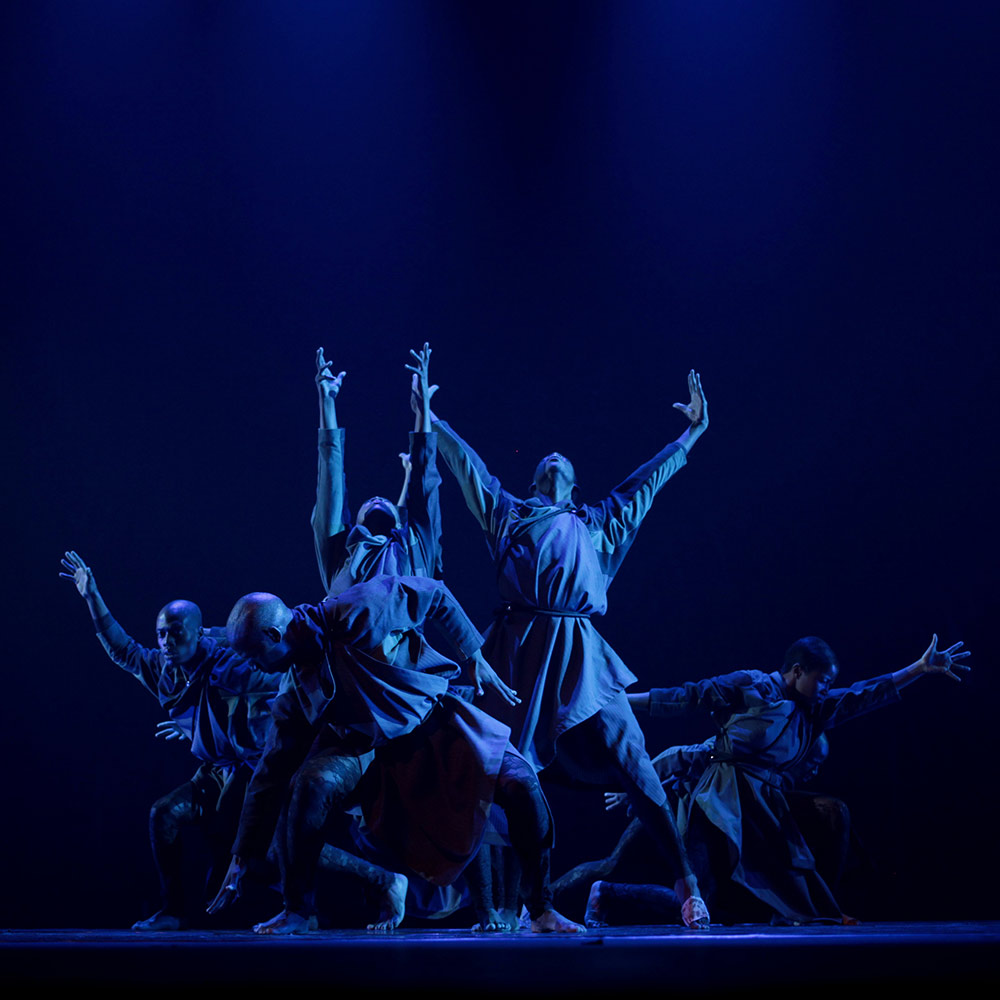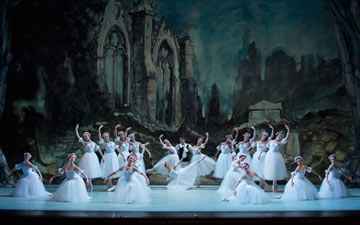
© Siphosihle Mkhwanazi. (Click image for larger version)
Gregory Maqoma
Cion: Requiem of Ravel’s Bolero
★★★✰✰
London, Barbican Theatre
www.gregmaqoma.com
www.barbican.org.uk
www.danceumbrella.co.uk
Gregory Maqoma’s theatrical storytelling, a potent mix of a capella, dance styles and scenography, projects a strong universal theme in Cion: Requiem of Ravel’s Bolero: grief. How we grieve and why we grieve. In a world that doesn’t feel so happy, Cion’s collective outpouring of grief responds to death and violence caused by conflict, religious intolerance, greed and power. Inspired by the novels of South African author Zakes Mda, whose writing reflected the political upheavals both in his own country and abroad, Maqoma’s Cion, shown in partnership with Dance Umbrella and the Barbican, connects to injustices of the past, present and future.
Director and performer Maqoma positions himself centrally in the work, playing a professional mourner, Toloki, who tries to bring catharsis to his flock of mourners. A calm, statuesque presence he walks through the hysterical crowd possessed by ancient spirits, releasing their sadness and eventually restores some kind of peace and harmony. But it’s a long, arduous journey to get there.
Cion, like Zion meaning ‘African Church’ opens with the gut wrenching sounds of a man weeping loud, vocal lamentations which cause his body to vibrate with sadness. He enters the eerie graveyard from the shadows, an installation of multiple crosses, only partially illuminated to create an underworld of shapes and shades. Eight members of Maqoma’s company Vuyani Dance Theatre and acapella choir, embody both the perpetrators of destruction and their victims, shaping a disturbing landscape which resembles hell. Their theatrical movement is explosive and unpredictable, morphing African dance styles with contemporary and even classical ones. The dancers take it in turns to carry out hideous acts of violence on each other: they twist a victim’s ears until he shrieks in agony; they become ferocious dogs that devour a terrified victim or fanatic soldiers who invade an imaginary village waving sinister black flags. A particularly chilling scenario is when Roseline Wilkens sings about how she must not love her children in case they become too soft. While her actions and song have a comedic edge, as in most of the scenes, the harshness of the concept is as awful as the other torturous acts. It makes for hard watching – as disjointed fragments of disturbing stories and references collide in multiple layers of content.

© John Hogg. (Click image for larger version)
But reassuring unison interludes gel the work; these moments in which the dancers and musicians thrill with their exuberant dancing and astonishing singing emphasise the importance of the chorus as being aesthetically healing. Repetitive rhythms, stamps and beats created by voice and body banish the grief giving us optimism and hope. The multi-talented musicians who sing Isicathamiya – a South African Zulu singing tradition like acapella – composed by Nhlanhla Mahlangu are so astonishing that they sound like a chamber orchestra. Their rendition of the familiar, slow crescendo in Ravel’s Bolero, a refrain which we hear twice in the richly, textured musical score, produced entirely by outstanding vocal effects, renders the need of musical instruments totally redundant. For me it is these four musicians, also integrated into the mise-en-scene as protagonists – beatboxer Siphiwe Nkabinde, Sbusiso Shozi, Xolisile Bongwana and Thabang Mkhwanazi – that make Cion so special.
I appreciate the cultural complexities of Cion constructed from a South African perspective with most of the text and music spoken or sung in African Zulu language. While some of the work’s nuances might be lost on us, the outstanding, soul shaking performances touch us to the core. Maqoma through his questioning of grief and theatrical display of how its collective healing properties bring an essential humanity to our cruel world, is something to cling onto.

















You must be logged in to post a comment.